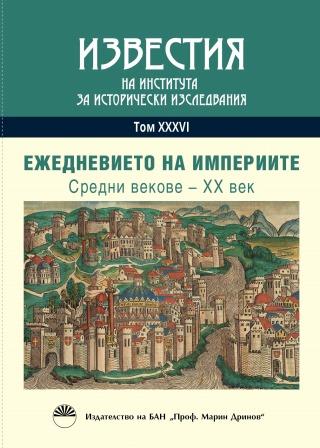Българо-византийски търговски отношения през VIII–Х век
Bulgarian-Byzantine Trade Relations in the Eighth through the Tenth Century
Author(s): Liliana SimeonovaSubject(s): History, Economic history, Middle Ages, 6th to 12th Centuries
Published by: Институт за исторически изследвания - Българска академия на науките
Keywords: Bulgaria; Byzantium; Constantinople; Black Sea; Mediterranean; Danube; trade; transport corridors
Summary/Abstract: The present article aims to analyze the bilateral trade relations between Bulgaria and Byzantium that were established as early as the beginning of the eighth century as well as the transit systems that allowed the trade flows, via Bulgarian territory, of long-distance imports from other geographic areas into Byzantium. The study is based on a wide variety of sources: chronicles, legal documents, and archaeological material. Prior to the partial liberalization, in the early tenth century, of the rules regarding the entry of aliens into its territory, Byzantium had been sticking to the old imperial policy of carrying out trade with “barbarians” on specifically designated points on its borders. The seals of the customs officers in Messembria and, somewhat later, in Deultum on the Black Sea coast bear testimony to the fact the bilateral Byzantine-Bulgarian trade was mostly channeled through those two ports. The seals of the customs officers in Thessalonica, on the other hand, testify to the influx of goods from the Mediterranean into Byzantium and thence into Bulgaria, and vice versa. The Book of the Prefect (AD 912) sets new rules, as regards the sojourn of foreign traders in the imperial capital. The only two groups of foreign merchants to be mentioned in that legal document are the Muslims and the Bulgarians. While the Muslims were obliged to stay at designated gated inns in Constantinople and carry out their business transactions there, the Bulgarian wholesalers seemed to have been granted the privilege of meeting with their Byzantine counterparts in a satellite market that was set up outside the city walls. The relocation of that market from Constantinople to Thessalonica in the early 900s was used by Simeon of Bulgaria as a casus belli to declare war on the Empire. As for transit trade, there were two main transport corridors – one following the Danube and another one following the Dnieper and the Dniester and thence the western Black Sea coast down to the Danube Delta – that converged at some point on the Lower Danube. These corridors were used by the merchants from East-Central and Eastern Europe in order to bring their goods to Byzantium. Pristlavitsa, or Little Preslav, was the main market in that area, in which goods from Bohemia and Hungary, Kievan Rus’ and Greece were traded. However, there is no surviving evidence of Bulgarians playing a role in that long-distance transit trade. It was only in the twelfth century that Bulgarians started going to the big international fairs in Byzantium.
Journal: Известия на Института за исторически изследвания
- Issue Year: 36/2021
- Issue No: 1
- Page Range: 381-390
- Page Count: 10
- Language: Bulgarian
- Content File-PDF

